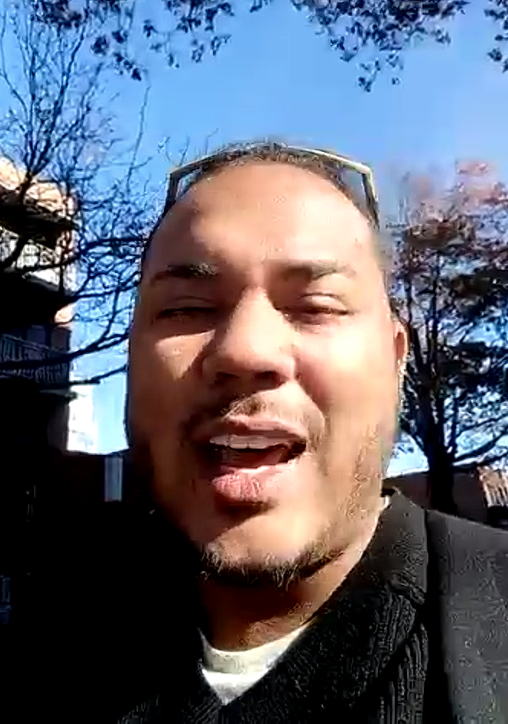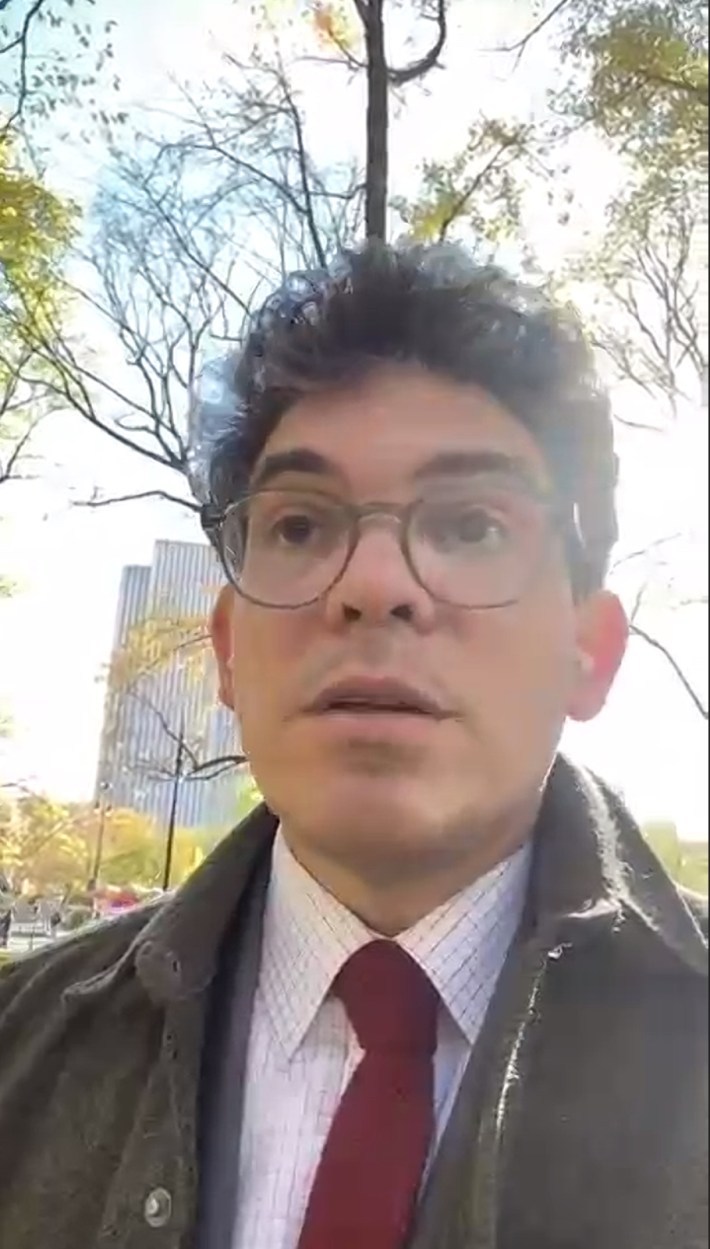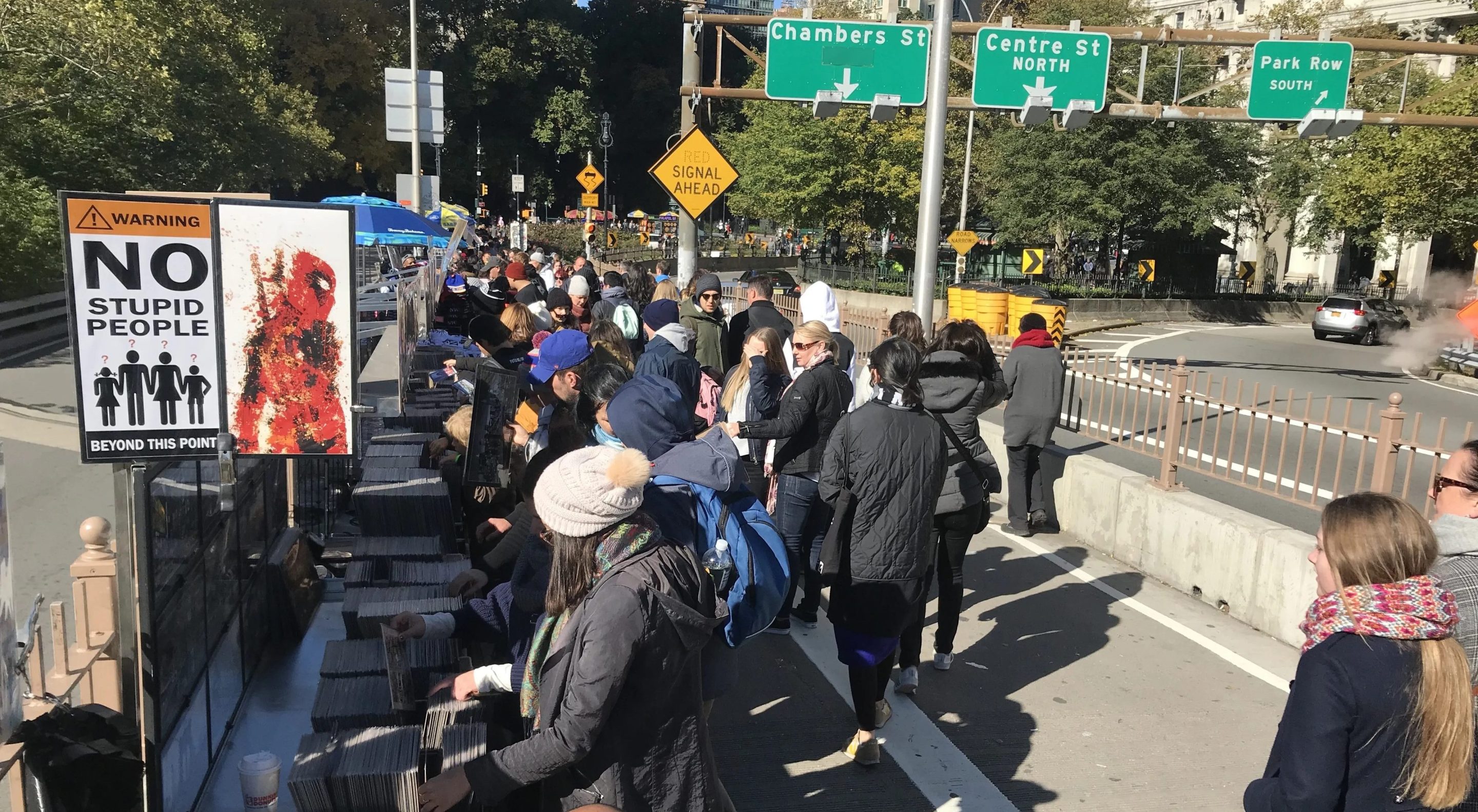The city’s proposal to prohibit street vending on bridges across the five boroughs has received overwhelming support in public comments and a hearing Wednesday — as vendors on the Brooklyn Bridge hold out hope for some sort of compromise.
Speakers at Wednesday's hearing including local pols, residents, and tour guides who work on the bridge urged officials to enact the “span ban” as soon as possible and clear the crowded Brooklyn Bridge of the dozens vendors selling Big Apple-themed wares each day there to tourists.
"I am a strong supporter of vending, but it should go in designated spaces, and we should be expanding licenses for more vendors, but the Brooklyn Bridge is not the place for it," said Council Member Lincoln Restler, who represents the Brooklyn side of the bridge. “I really want to thank DOT for heeding our call to eliminate vending on the Brooklyn Bridge.”
The bridge saw a surge in street vendors ever since the crowded boardwalk became pedestrian-only and cyclists got their own bikeway in the roadbed below two years ago.
Pedestrian counts doubled during that time on the Roebling-designed connector. That prompted DOT to push for a ban against any “peddler, vendor, hawker, or huckster” on pedestrian paths, bike lanes, and approaches of its 789 bridges, including the four East River crossings of the Brooklyn, Queensboro, Manhattan, and Williamsburg bridges.
Vendors said the new rule would remove one of the few legal spaces with high foot traffic, on top of the challenges to get one of the hard-to-obtain street selling permits.
“You're trying to get rid of our livelihood, our way to make money, our only legal spots that are even available to us,” said Tyrone Hull. “You're not offering any option on how we can go ahead and work around it. Instead, you're just trying to say, ‘Get rid of it, get rid of it, get rid of it,’ and it's to the point to where I can't find any spots — at all.”
An advocate for vendors slammed the city’s ban as too “drastic."
“There are currently no specific vending laws or rules for bridges. The department should create some rather than enact a blanket ban on vending,” said Matthew Shapiro, the legal director of the Street Vendor Project, an organization within the Urban Justice Center.

More than 260 people have commented on the proposed rule online, with sentiments in favor of the restrictions dominating the page. One Brooklyn resident at the virtual hearing echoed many of those feelings.
“The commercialization of the bridge is a desecration of one of the jewels of New York City. There should be no vendors at all on the bridge. They should all be taken off,” said Mark Shilen.
The 140-year-old Brooklyn Bridge transformed in the last two years from hosting a few vendors to an overwhelming number of ever-more brazen sellers, including some offering mixed cocktails, photo ops with a live snake, and several stands to shoot 360-videos against the backdrop of Mayor Adams’s theme song “Empire State of Mind” on repeat.
“Hearing a 30-second loop of Jay-Z’s ‘Empire State of Mind’ seven times in one walk across the bridge does not add to the needs of the city and makes it uncomfortable to be on the bridge,” said Amber Field, a city tour guide with a large following on TikTok. “I don't need to be competing with Alicia Keys, I'm not a good singer.”
Field said she opposed a full vending ban, but that the city should limit vending on the span itself, while enforcing existing laws, such as those against setting up illegal sound systems.
“I never want to get in the way of anyone trying to make money, like, I make money off the bridge,” said Field. “At the same time, our city in the 21st century lacks imagination to look at any public space as being anything other than an outdoor mall.”
Other guides have simply given up going over the bridge with visitors, according Patrick Casey, a recording secretary at the Guides Association of New York City.
"Dozens of my fellow guides have been forced to give up a popular product. That cathedral of engineering and civic pride has been stolen from guides, the tourism industry, and some of the 60 million yearly visitors to New York," said Casey.

Restler called on the city to carve out designated space for vendors. He said he would be willing to work on the issue with his counterpart representing the Manhattan side of the span, Council Member Chris Marte — all while asking the city to enact the broader vending prohibition “as quickly as possible.”
Marte's office did not immediately respond for comment.
Daily pedestrian traffic on the Brooklyn Bridge swelled from 17,000 on a weekend fall day in 2021 — around the time then-Mayor Bill de Blasio opened the popular bike lanes — to 34,000 last year, on a pathway that averages 16 feet in width, but narrows down to as little as five feet, according to DOT.
The agency has raised concerns about the 1883 structure's ability to bear the extra load of carts, tables, wagons, and generators the vendors bring, however, officials have not voiced similar concerns for the more than 116,000 motor vehicles that traverse the crossing each day.
Cops did some sweeps on the bridge early in the year, but vendors quickly set back up afterward.
DOT declined to give a specific schedule for when officials will implement the ban, but a spokesperson said they will consider public comments and release a finalized rule in the City Record, and the change will go into effect 30 days after that.






